Nothing captures the imagination of a football fan quite like the emergence of wonderkids, players surrounded by both high hopes and expectations, and significant uncertainty. Predicting the career trajectory of a young footballer is an extremely complex exercise, bearing in mind the many variables that can suddenly derail even the most obvious of career paths. At Soccerment we try to manage such complexity by building data-driven models and – as described in this analysis – applying them to football players born in 2001 or later. We then rank these players for their expected performance over the next 12 months, with our ultimate goal being to offer insights into the most exciting young players in Europe.
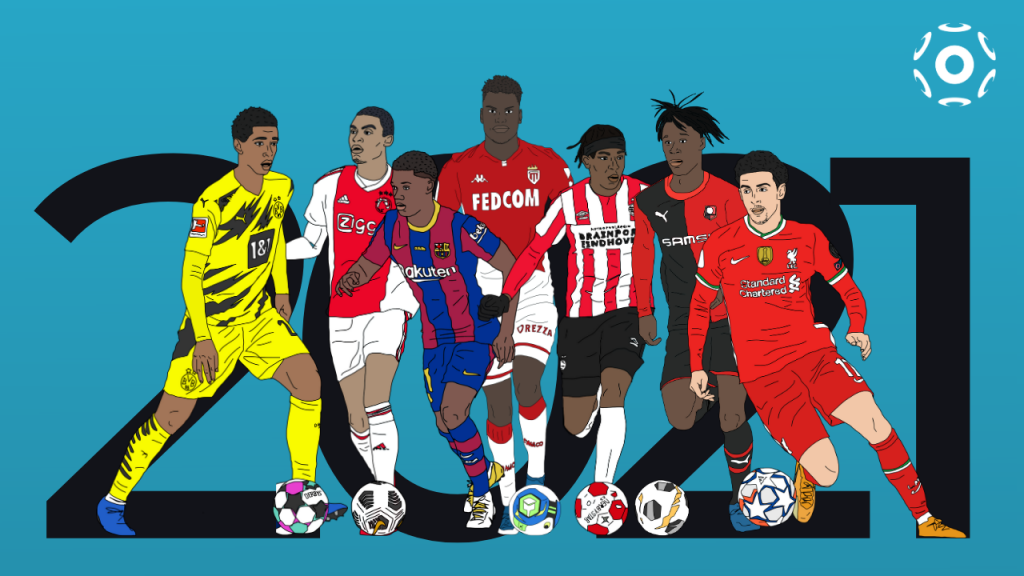
Does football hold any bigger thrill than a wonderkid?
As rightly pointed out by Ryan Baldi in his recent book ‘The Next Big Thing‘, “nothing captures the imagination of the football fan in quite the same way as the emergence of a prodigious young player“.
At the end of 2019, Erling Braut Haaland was a promising young Norwegian forward playing in the Austrian league. Fast forward twelve months, and Haaland is regarded by the football world as an infallible scoring machine (and rightly so, having scored 35 goals in 34 appearances for Borussia Dortmund), has won the Golden Boy award, is the object of the biggest club’s most heartfelt (transfer!) desires, and has millions of social media followers. Haaland revealed himself as a “wonderkid” and since then just hasn’t stopped beating the higher and higher expectations he created for himself.
‘Wonderkid‘ is a term that we derived from the videogame Football Manager, one of our key sources of inspiration. It identifies young players with high potential. We like the concept so much that in our algorithmically-derived player descriptions, we have found space for wonderkids. In our Player Smart Search (click here for more information), the user can easily select the category “wonderkids” and deep-dive into the shortlist (spoiler: at the time of writing, Haaland is on the list).
Unlike Haaland’s experience, Ryan Baldi’s aforementioned book focuses on the personal stories of fifteen wonderkids who did not make it, young players whose destiny was to “burn brightly and fade quickly“. The author explores each case separately and explains all the things that can go wrong in the early career of a new football star: injuries, excess, bad relationships with managers and bad transfer choices are just a few of the things that can derail a wonderkid from the path to success and glory. This fascinating book exposes just how difficult it is to analyse the potential of these players.
We try to embrace the extreme complexity of predicting the career trajectory of a young footballer by building data-driven models. In the following analysis, we apply these models to football players born in 2001 or later, and rank them for their expected performance over the next 12 months. Just to clarify, with this exercise and the resulting ranking, we are not trying to predict which young footballers will have the brightest careers: the forecast is indeed limited to the calendar year ahead.

Full ranking of the top 50 wonderkids 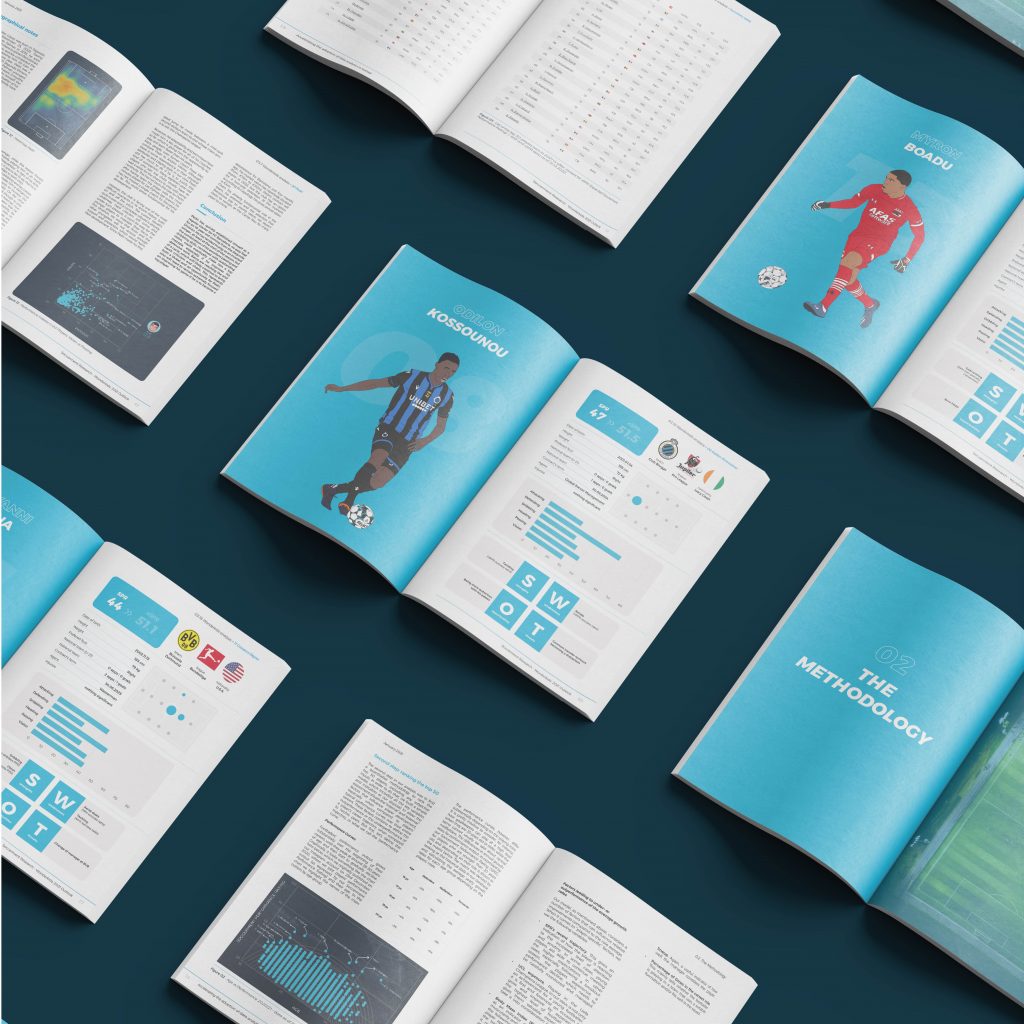
25 detailed player analyses 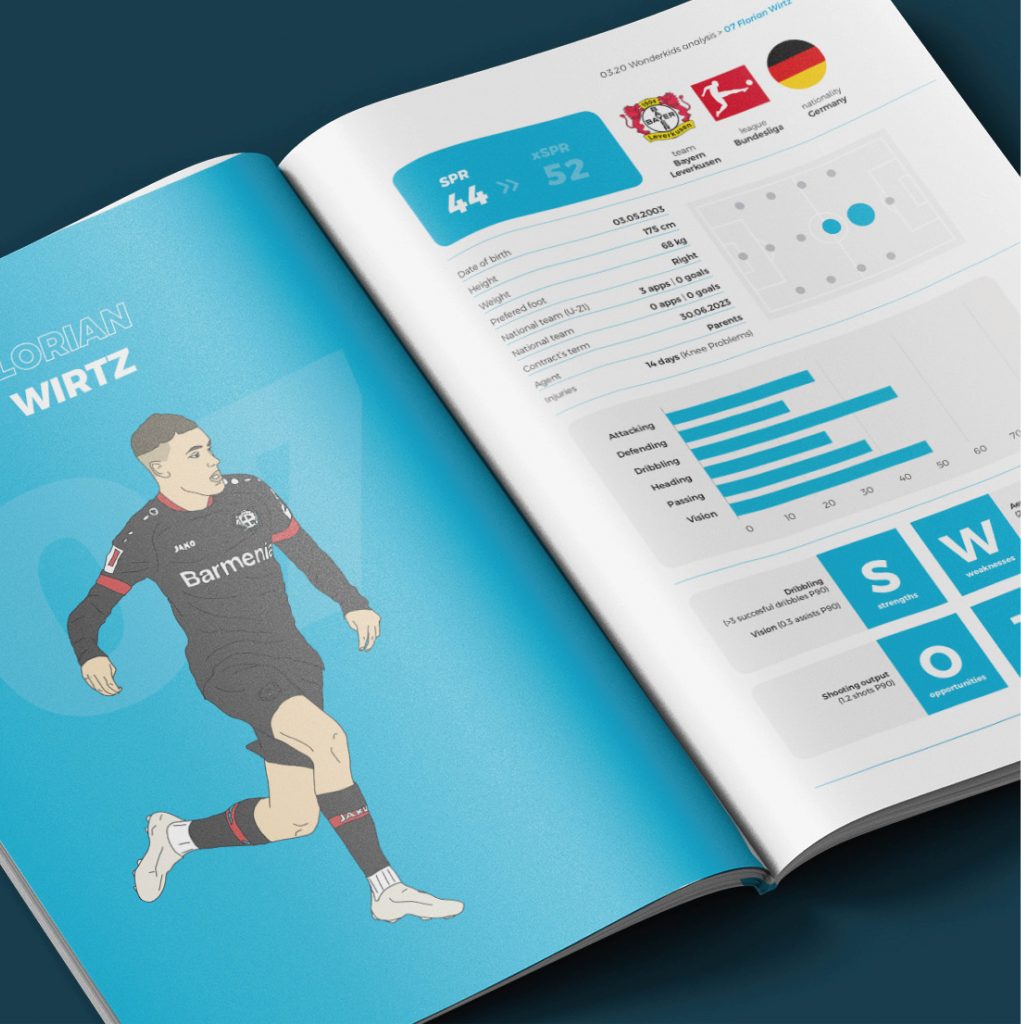
All the best players born in 2001 or later 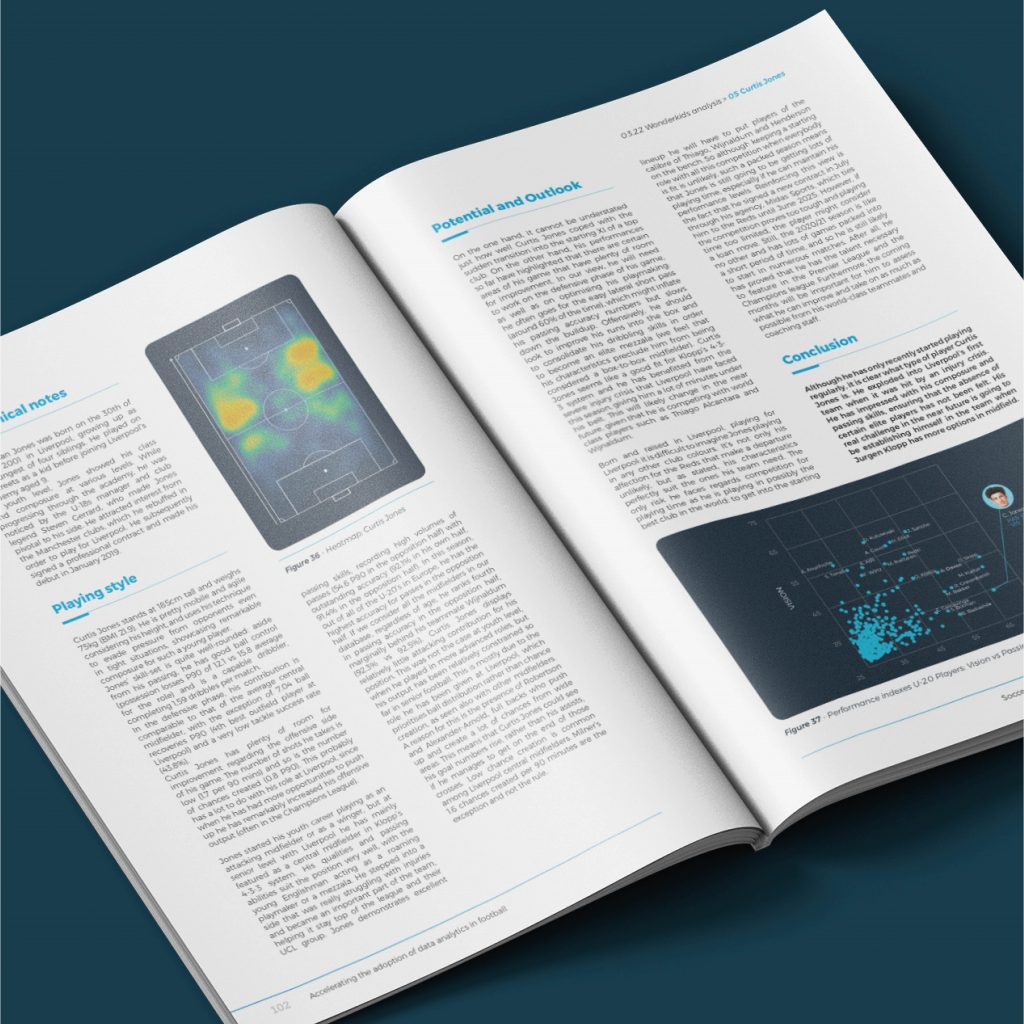
In-depth football research
The project
Our ‘Wonderkids: 2021 Outlook‘ started out as an internal game: the initial idea was to try to forecast the 50 players on the shortlist of the Golden Boy, an award given by sports journalists to the young footballer playing in Europe considered to have been the most impressive during the calendar year (two halves of two separate seasons). The prize, established by Italian sports newspaper ‘Tuttosport’ in 2003, includes jurors from ‘Bild’ (Germany), ‘Blick’ (Switzerland), ‘A Bola’ (Portugal), ‘l’Équipe’ (France), ‘France Football’ (France), ‘Marca’ (Spain), ‘Mundo Deportivo’ (Spain), ‘Ta Nea’ (Greece), ‘Sport Express’ (Russia), ‘De Telegraaf’ (Netherlands), and ‘The Times’ (United Kingdom). All nominees for the Golden Boy must be under the age of 21 and play in a European nation’s top tier league.
What was intended to be a “game”, became motivation to develop our models that predict football players’ performances over a certain time frame.
Developing models like this is not an easy task. Developing them so that they are useful when applied to young footballers is even more difficult. There are two important reasons for this:
- the first one, already mentioned, has to do with the very high volatility that young players’ performances are subject to.
- the second reason is that, in the case of Under 20 players, the historical stats available for analysis is very limited as the data for footballers before they reach the top tiers of professional football is scarce (this is a problem we are trying to solve by developing scalable, affordable and user-friendly football data-gathering solutions, such as this).
Nonetheless, we have built a simplified version of our model and applied it to the players in our database who were born in 2001 or later. This simple model was developed to form the ranking of the top 50 wonderkids for 2021.
Later in the analysis we list the top wonderkids, from 50th to 1st, depending on the value of their Expected Soccerment Performance Rating (‘xSPR’).
At the end of the year we will be able to check whether:
- there is any correspondence between our list and 2021 Golden Boy shortlist;
- the Expected Soccerment Performance Ratings (‘xSPR’) that we use to rank the players in this document is more or less in line with the players’ SPR at the end of the year.
As you might have already guessed, our ‘Wonderkids: 2021 Outlook’ will be followed by a ‘Wonderkids: 2021 Review” sometime in December 2021.
The methodology
[Click here to skip the methodology and jump to the final ranking]
Initial list of around 100 players
We took into consideration all players who were born on 1st January 2001 or after and who – as of 31st December 2020 – had played at least 500 minutes in total and at least 270 minutes in the current season, in one of the fourteen leagues we cover (Tiers 1 and 2 in England, Spain, Italy, Germany and France, and Tier 1 in the Netherlands, Portugal, Belgium and Turkey).
The playing time constraints, which ensure statistical relevance, drastically reduced the number of players that we could include in our Outlook, which means that we had to exclude some very interesting prospects. Here below is a partial list of some of the main names we were forced to leave out.
| Player | Club | Reason for exclusion |
|---|---|---|
| Youssoufa Moukoko | BVB | < 270 mins in 2020/21 & < 500 mins tot |
| Amad Diallo | MUN | < 270 mins in 2020/21 & < 500 mins tot |
| Joshua Zirkzee | BAY | < 270 mins in 2020/21 & < 500 mins tot |
| Xavi Simons | PSG | < 270 mins in 2020/21 & < 500 mins tot |
| Billy Gilmour | CHE | < 270 mins in 2020/21 & < 500 mins tot |
| William Saliba | ARS/NIC | < 270 mins in 2020/21 |
| Eric Garcia | MCI | < 270 mins in 2020/21 |
| Eduardo Quaresma | SCP | < 270 mins in 2020/21 |
| Rayan Cherki | LYO | < 500 mins in total |
| Jamal Musiala | BAY | < 500 mins in total |
| Fabio Silva | WOL | < 500 mins in total |
Ranking methodology
The methodology by which we arrived at the wonderkids’ final ranking was divided into two stages.
First step: selecting the best 50
The first stage consisted in ranking the initial list of around 100 players by using our Soccerment Performance Rating (‘SPR’), the algorithm we have developed to evaluate the performances of football players.
Soccerment Performance Rating
The SPR takes into account every match event, weighted through ad-hoc coefficients.
The various events (rebased to ‘per 90 minutes’) form the contribution of a player to the defensive, buildup and attacking phase of her/his team. These contributions are then weighted according to the player’s role (for example, the attacking contribution will weigh more for a forward and less for a defender).
In line with what we do for the overall stats, we show the SPR of a player when she/he has accrued at least 270 minutes of playing time.
In order to reward consistency of performance and limit short-termist hype, the SPR is adjusted by taking playing time into consideration. At 270 minutes of playing time the adjustment is 84.7%. It reaches 100% when the footballer has played at least 1,800 minutes in the league (in most leagues, this equals half a season, plus one match). Therefore, every additional minute above 270 and up to 1800 minutes is worth 0.01% of SPR.
It is worth mentioning that the five players with the highest SPR at the moment are (in terms of total SPR, i.e. the weighted-average SPR for all the seasons available in our database):
➜ Lionel Messi, with 84
➜ Neymar Jr, with 76
➜ Cristiano Ronaldo, with 75
➜ Robert Lewandowski, with 70
➜ Kylian Mbappé, with 70
A total SPR of 70 is the threshold that we use to define the so called “world-class” players, while for the “elite players” the threshold was set at 60.
It is also worth mentioning that the maximum level of a seasonal SPR was set at 100 and corresponds to the performances reached by Lionel Messi in the 2011/12 La Liga: 50 goals (plus 8 shots against the woodwork), 16 assists (from 92 chances created), 176 successful dribbles, almost 2000 accurate passes, plus other kind-of-unreal stats.
We thus easily filtered the top 50. Here are some statistics regarding the top 50 list:
- the average age is 18.6 years;
- the most represented leagues, with 8 players each, are: La Liga, Ligue 1, and the Jupiler Pro League;
- the most represented nationality is French (8 players);
- the most represented clubs are Rennes and Club Brugge (3 players each).
Second step: ranking the top 50
The second step in our analysis was to find a quantitative methodology to rank the top 50 players, excluding any subjective inputs.
In order to do that, we built a simple model, which included all the key variables and indicators at our disposal to allow the assessment of both the “internal” and “external” factors that influence player development, especially when compared to players’ typical performance curves over their entire careers. These factors combine to define the outperformance or the underperformance of a player’s career trajectory, when compared to her/his peers. But first, let’s define this trajectory, or what we call the ‘performance curve’.
Performance curves
Footballers’ performance output grows substantially over the beginning of their careers, until they peak at around 28-30 years of age and then start to gradually decline.
Graphically, it looks something like the chart here below, which we originally published on our Instagram account on 23rd December 2020, where we plot players’ performance output (as expressed by our Soccerment Performance Rating) and their age. In the chart we highlight the names of the main outliers by age group.
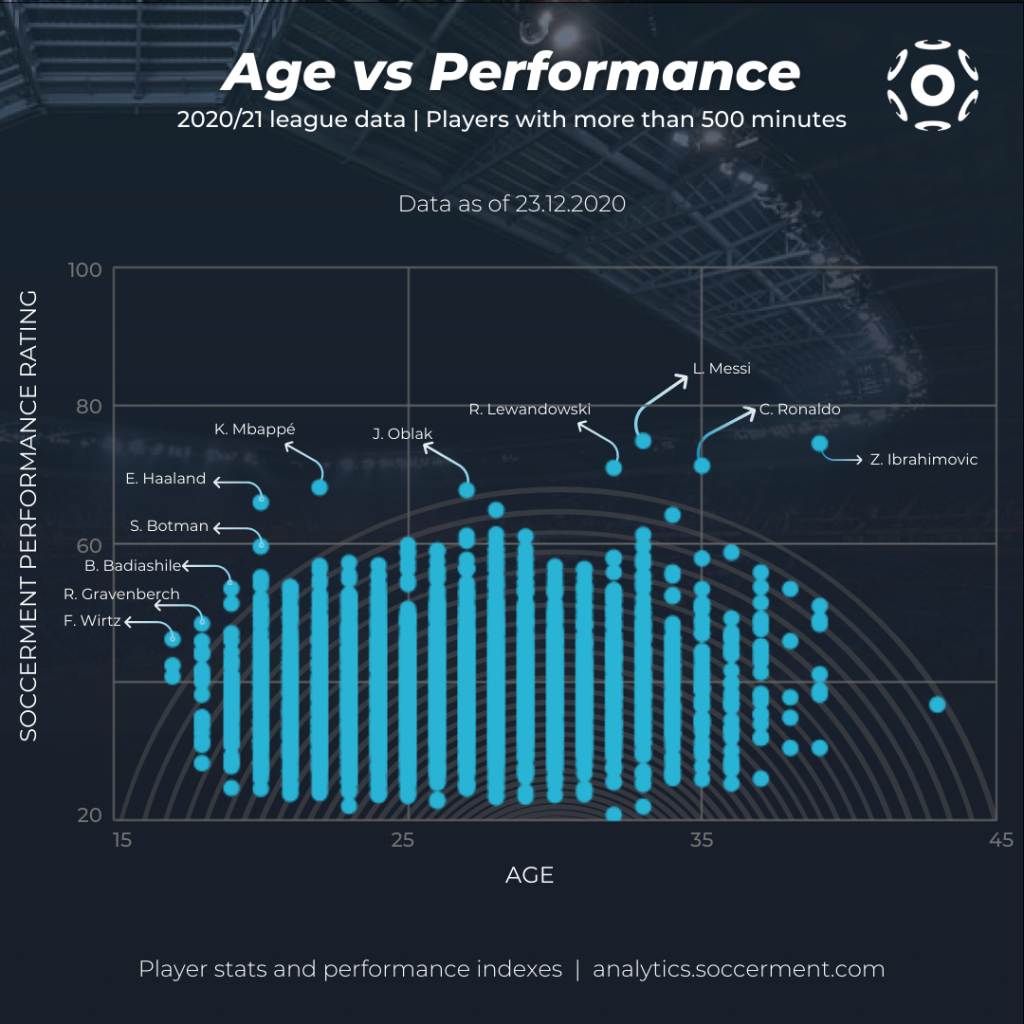
The performance curves, however, differ substantially depending on the playing roles. It is pretty intuitive to consider, for instance, how goalkeepers can play at a high level when they are 35 years old or older, while the same cannot usually be said about central midfielders (there are obviously exceptions to the rule, like these 33 players – to view the full list a free signup is needed).
[ec_product productid=”12″ style=””]
The differences in annual growth rates for performance output, as expressed by our Soccerment Performance Rating (‘SPR’), for players who are younger than 20 years old and depending on their role is shown in the matrix below. The matrix was derived by looking at the historical stats in our database and calculating the average yearly growth rates for each age group depending on the players’ roles.
| Age | Defenders | Midfielders | Forwards |
| 16 yo | +8% | +13% | +10% |
| 17 yo | +6% | +12% | +9% |
| 18 yo | +5% | +10% | +7% |
| 19 yo | +4% | +9% | +6% |
| 20 yo | +3% | +8% | +5% |
For a quick explanation of how to read the matrix, here’s an example: on average, a midfielder who is today 18 years old and shows a SPR of 50, will experience a 10% improvement over the next 12 months, when the player’s SPR will thus reach 55. An average player who is 18 too and shows a SPR of 50 as well, but who is a defender, will see her/his SPR grow by 5% and the SPR will reach 52.5 in the next 12 months.
Factors leading to under- or outperformance of the average growth rates
Our model, as mentioned above, considers a number of factors that can influence relative improvements compared to the role average.
When it comes to “player-specific” factors, we use the following variables:
- SPR’s recent trajectory. This gives an indication of how the player is reacting to the increased level of attention and scrutiny. In some cases, young players are able to continue meeting the higher expectations. In other cases, especially following a breakout season, the players experience a performance decline, which needs to be carefully monitored and managed.
- UCL exposure. Playing in the Uefa Champions League, in our view, is not only an achievement for a young footballer, it is first and foremost an occasion to grow and improve by experiencing the highest level of football, which gives them valuable experience. We take it into consideration in our model.
- Body Mass Index (BMI). We use this as an indicator of a player’s current muscularity and its potential growth over the following few years. When a young player approaches senior football and the training sessions that come with it, muscular growth is often impressive and with the added strength and explosiveness performances normally improve. Some noteworthy examples are the transformations experienced by the likes of Adama Traoré and Leon Goretzka.
As for external factors, i.e. the so called ‘context’, we took into consideration the following:
- The player’s league level (average SPR for the league) and the player’s team level (the team’s SPR). These are useful indicators of how brightly the player’s star can shine, when taken either singularly or in combination (it is easier to do well and gain confidence when playing for team that finishes up the table).
- Playing time as a percentage of availability (adjusted for the games missed due to injury). This is useful to understand whether the player fits well into a team and the team’s manager appreciates their contribution.
- Percentage of times in the starting lineup. Again, a useful indicator of how well the manager considers the player.
- Percentage of times in the correct role. This mainly tells whether the footballer is playing in a team that uses a suitable formation and/or fits well in the squad.
Final ranking and Top 11
The final ranking of Under 19 players, as well as the U-19’s Top 11 selection, is based on the Expected SPR in twelve months, that we call xSPR.
Final ranking
Here below the top 50 players, ranked by the fiftieth to the first. Click here to skip the detailed list and jump to the summary table.
50th. Andrea Papetti (18 | Italy | Brescia Calcio | xSPR: 37.7)
Andrea Papetti is a 18-year-old centre-back who plays for Brescia Calcio in the Italian Serie B. He’s 189 cm tall and weighs 84 kg. Key skill: Heading (he has already scored 2 headers in 22 senior career appearances).
49th. Ander Barrenetxea (19 | Spain | Real Sociedad | xSPR: 38.4)
Ander Barrenetxea Muguruza (27 Dec 2001) is a Spanish forward or left winger. Born in San Sebastián, he’s a graduate of Real Sociedad’s youth setup. Key skill: Dribbling (3.7 successful dribbles per 90 minutes).
48th. Joris Chotard (19 | France | Montpellier | xSPR: 38.6)
Joris Chotard (24 Sep 2001) is a French defensive midfielder playing for Montpellier. Key skill: Vision (0.1 through balls and 0.8 chances created per 90 minutes).
47th. Aster Vranckx (18 | Belgium | Mechelen | xSPR: 38.7)
Aster Vranckx (4 Oct 2002) is a Belgian midfielder. He is the typical mezzala, able to find space and be dangerous in the final third. Key skill: Attacking (0.3 direct goal involvement per 90 minutes in his senior career to date).
46th. Yunus Musah (18 | USA | Valencia CF | xSPR: 38.7)
A right winger who could also play as central midfielder, the American Yunus Musah (29 Nov 2002) grew up in Italy and England. Key skill: Dribbling (1.6 successful dribbles per 90 minutes).
45th. Youssouph Badij (19 | Senegal | Club Brugge | xSPR: 38.7)
Youssouph Mamadou Badji (20 Dec 2001) is a Senegalese forward. Key strength: physical structure (193cm height, 80kg weight). Badji made his international debut for Senegal in August 2019.
[ec_product productid=”12″ style=””]
44th. Noah Katterbach (19 | Germany | 1 FC Köln | xSPR: 38.8)
Noah Katterbach (13 Apr 2001) is a German left full-back, who spent the majority of his youth career at 1. FC Köln, starting at the under-8 level. In 2018, he was awarded the Fritz Walter Medal in Gold, for the best German player in the Under-17 age group. Key skill: Dribbling (2.0 successful dribbles per 90 minutes).
43rd. Kang-In Lee (19 | Korea Republic | Valencia CF | xSPR: 40.8)
Awarded the 2019 FIFA U-20 World Cup’s Golden Ball and nominated Asian Young Footballer of the Year in 2019, Kang-In Lee is a South-Korean attacking midfielder. Key skill: Vision (2.0 chances created per 90 minutes).
42nd. Issa Kabore (19 | Burkina Faso | Mechelen | xSPR: 41.0)
Issa Kaboré (12 May 2001) is a Burkinabé professional footballer who plays as a right-back for Mechelen in the Jupiler Pro League. Key skill: Crossing (1.8 successful crosses per 90 mins, with a 32% accuracy).
41st. Bafode Diakite (20 | France | Toulouse | xSPR: 41.1)
Bafode Diakite (6 Jan 2001) is a French centre-back playing for Toulouse in the French Ligue 2. Key skill: Defending (70% tackle success ratio and 6.3 ball recoveries per 90 minutes).
40th. Yari Verschaeren (19 | Belgium | Anderlecht | xSPR: 41.2)
Yari Verschaeren (12 Jul 2001) is a skilled, creative attacking midfielder from Belgium, playing for Anderlecht. Key skill: Vision (0.2 assists per 90 minutes).
39th. El Bilal Touré (19 | Mali | Reims | xSPR: 41.6)
El Bilal Touré (3 Oct 2001) is a Malian professional footballer who plays as a forward for Reims in the French Ligue 1. Key skill: Attacking (55% shooting accuracy, 17% non-penalty goal conversion).
38th. Cristian Devenish (19 | Colombia | Boavista | xSPR: 41.9)
Cristian Castro Devenish (25 Jan 2001) is a Colombian central defender, playing for Boavista in Primeira Liga. Key strength: physical structure (192cm height, 80kg weight).
37th. Takefusa Kubo (19 | Japan | Getafe | xSPR: 42.4)
Takefusa Kubo is a Japanese professional footballer who plays as a winger for Getafe in La Liga. Key skill: Dribbling (2.7 successful dribbles per 90 minutes).
36th. Charles de Ketelaere (19 | Belgium | Club Brugge | xSPR: 42.4)
Charles De Ketelaere (10 Mar 2001) is a very versatile footballer playing for Club Brugge in Belgium. He could play in almost all positions in midfield as well as in attack. Key skill: Vision (1.8 chances created per 90 minutes).
35th. Tanguy Coulibaly (19 | France | VfB Stuttgart | xSPR: 42.6)
Tanguy Coulibaly (18 Feb 2001) is a French midfielder who plays for Stuttgart in the German Bundesliga. Key skill: Dribbling (3.7 successful dribbles per 90 minutes).
34th. Ersin Destanoglu (20 | Turkey | Besiktas | xSPR: 42.8)
Ersin Destanoğlu (1 Jan 2001) is a Turkish goalkeeper who grew up in the youth sector of Beşiktaş, becoming the club’s first choice in June 2020. Key skill: Ball distribution (87% accuracy).
33rd. Killian Sardella (18 | Belgium | Anderlecht | xSPR: 42.8)
Killian Sardella (born 2 May 2002) is a Belgian professional footballer who plays as a defender (right-back or centre-back). Sardella was born in Belgium to an Italian father and Congolese mother. Key skill: Passing (76.5% accuracy in the opposition half).
32nd. Armando Broja (19 | Albania | Vitesse | xSPR: 43.1)
Armando Broja (10 Sep 2001) is an Albanian forward (born in England though), who has played for Tottenham Hotspur and Chelsea at youth level, while now he is on loan to Vitesse in Eredivisie (from Chelsea). Key skill: Attacking (0.7 non-penalty goals per 90 minutes so far in ERE).
31st. Ivan Ilic (19 | Serbia | Hellas Verona | xSPR: 43.1)
Ivan Ilic (17 Mar 2001) is a Serbian complete midfielder, who plays for Hellas Verona (Serie A), on loan from Manchester City. Key skill: Passing (86% accuracy).
30th. Malick Thiaw (19 | Finland | Schalke 04 | xSPR: 43.2)
Malick Thiaw was born in Germany (8 Aug 2001), but holds a Finnish passport (Senegalese father and Finnish mother). He plays as a centre-back for Schalke 04 in the German Bundesliga. Key strength: physical structure (191cm height, 80kg weight).
29th. Nicolò Rovella (19 | Italy | Genoa | xSPR: 43.7)
Nicolò Rovella (4 Dec 2001) is an Italian midfielder playing for Genoa, in the Italian Serie A (on loan from Juventus). Key skill: Composure (below-average possession losses per 90 minutes).
28th. Aaron Hickey (18 | Scotland | Bologna | xSPR: 45.0)
Aaron Hickey is a 18-year-old Scottish full-back who plays for Bologna in the Italian Serie A. Key skill: Passing (88% accuracy).
27th. Nicolas Raskin (19 | Belgium | Standard | xSPR: 45.4)
Nicolas Raskin (23 Feb 2001) is a Belgian midfielder playing for Standard Liège in the Jupiler Pro League. A very complete midfielder, he does well both defensively and when in the attacking phase. Key skill: Defending (8.1 ball recoveries per 90 minutes).
26th. Bryan Gil (19 | Spain | SD Eibar | xSPR: 45.7)
Bryan Gil Salvatierra (11 Feb 2001) is a Spanish left winger who plays for Eibar, on loan from Sevilla FC. Top skill: Dribbling (2.6 successful dribbles per 90 minutes).
Our research team dedicated ad-hoc analyses to all the players ranked from the twenty-fifth to the first position.
Here below the people involved with the project:
– Aldo Comi
– Niccolò Golinelli (data analyst)
– Alex Bar (contributor)
– Alessandro Mondini (contributor)
– Luca Poggi (contributor)
– Aleksander Seabrook (contributor)
– Max Bluer (editor)
– Comiale (player cartoons)
25th. Adil Aouchiche (18 | France | Saint-Étienne | xSPR: 45.8)
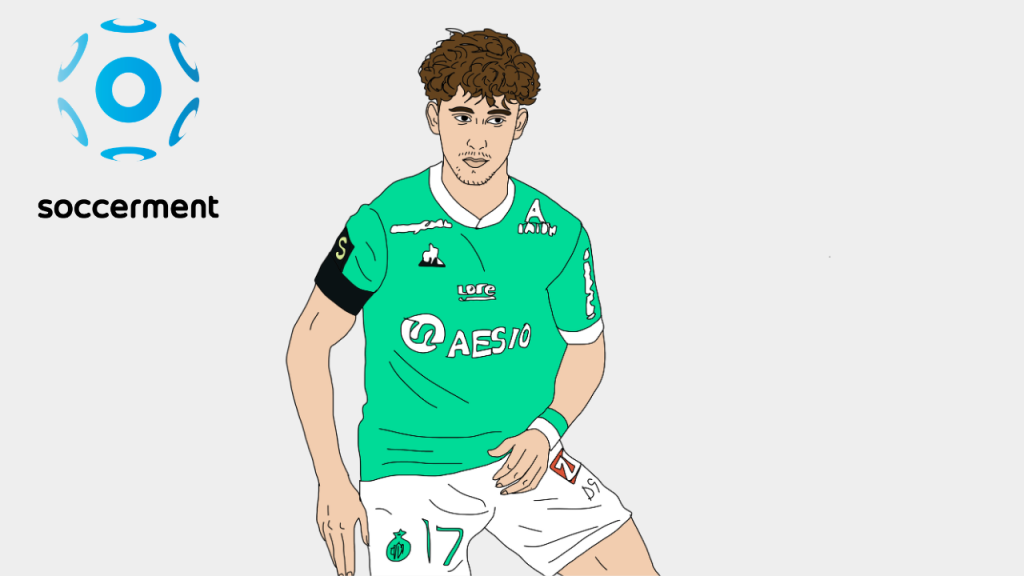
| Adil Aouchiche was voted second-best player at the U-17 World Cup in November 2019, a sign that his talent is already well recognised internationally. Gifted with above-average technical skills, he excels in chance creation and dribbling. Such features, however, could be considered a luxury in a team battling relegation, like his St-Étienne. This is probably one of the reasons why Aouchiche is struggling to meet the high expectations that followed his arrival to Les Verts. ➜ FULL ANALYSIS |
| Profile |
| Seasonal stats |
| Advanced stats & comparative tool |
24th. Harvey Elliott (17 | England | Blackburn | xSPR: 46.0)
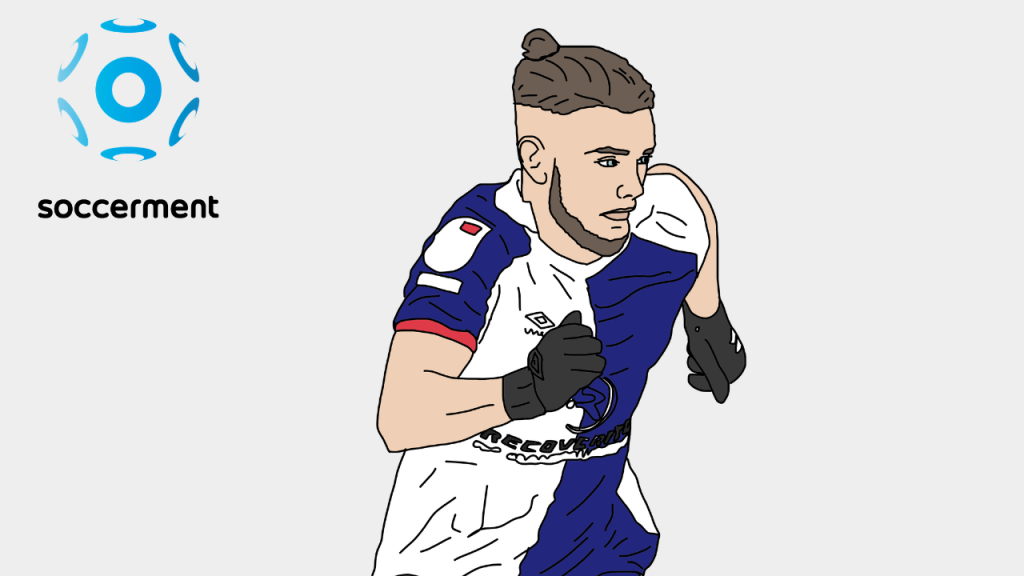
| Harvey Elliott, a very skilled attacking midfielder, is impressing in his loan spell with Blackburn, where he continues to hone his talents as part of a process that will lead him back to his parent club Liverpool, sooner or later. According to our model, in 12 months he should be ready for a chance in the Premier League, although a mid-table side would be more suitable initially. His best quality is undoubtedly his vision, which allows him to deliver spectacular and effective through balls and a continuous flow of assists. ➜ FULL ANALYSIS |
| Profile |
| Seasonal stats |
| Advanced stats & comparative tool |
23rd. Nuno Mendes (18 | Portugal | Sporting | xSPR: 46.2)
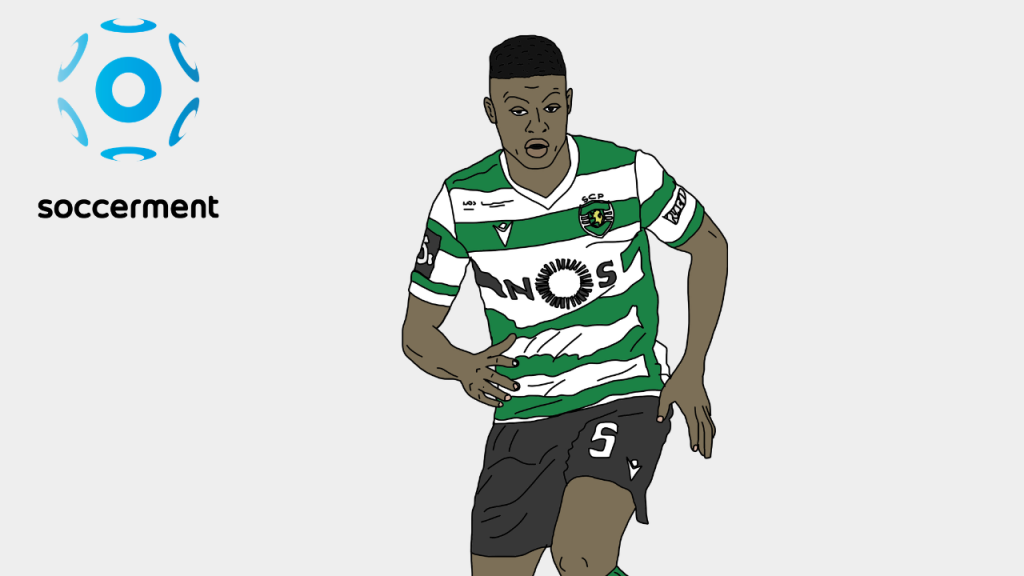
| Nuno Mendes, born in 2002, is a left wing-back at Sporting CP where he shines with his dynamism, personality, dribbling skills and defensive contribution. However, his offensive production has been poor, with just one goal and no assists in 19 matches (his per-match xG and xA numbers are on the low side). While there are some doubts about his ability to adapt to a four-men defence and to a more challenging league, he is nonetheless considered one of the most promising Portuguese players – as demonstrated by the international interest in him. ➜ FULL ANALYSIS |
| Profile |
| Seasonal stats |
| Advanced stats & comparative tool |
22nd. Rodrygo (20 | Brazil | Real Madrid | xSPR: 46.3)

| A skillful winger with an eye for goal, Rodrygo has just under 100 professional appearances and a debut with the Seleçao on his CV. These are, of course, outstanding accomplishments for a youngster who is yet to turn 20 years old, but they still fall somewhat short of the most optimistic forecasts for him: in Brazil he has been expected to become a world-class player since he was a kid. Meeting Real Madrid’s high standards and regularly making the starting XI is an arduous task for any player; in our view, it will require more consistent output from Rodrygo, for which avoiding injuries is a pre-requisite. ➜ FULL ANALYSIS |
| Profile |
| Seasonal stats |
| Advanced stats & comparative tool |
21st. Nathan Collins (19 | Republic of Ireland | Stoke | xSPR: 46.3)
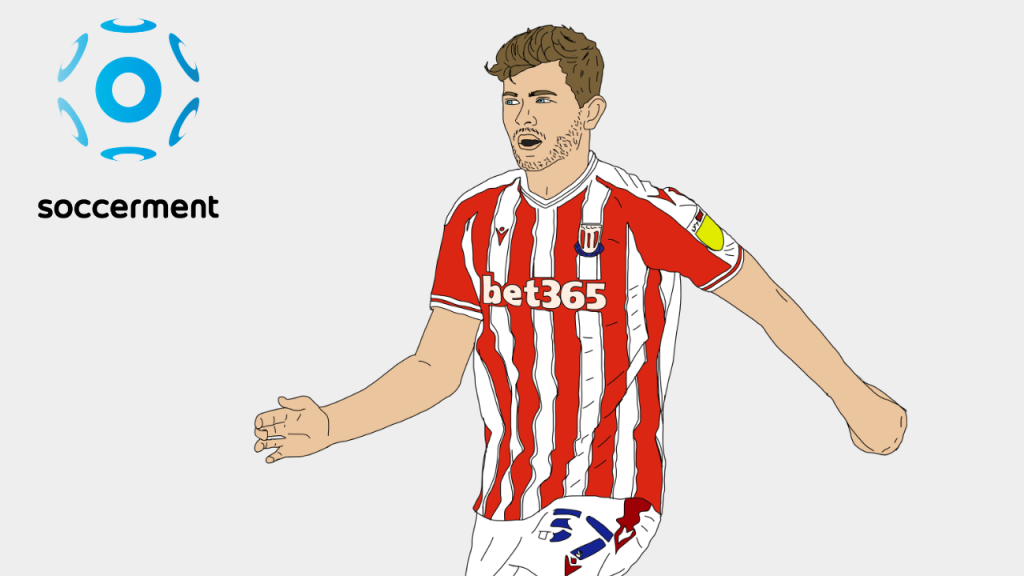
| At first glance, Nathan Collins seems like the archetypal defender for an old-fashioned direct style of football, owing to his imposing physical presence. In reality, his stats also show glimpses of a more modern footballer. What he might be missing is experience in more competitive leagues, and outside the UK. In our view, next season he should be ready to move to a Premier League side where he could continue his progress. After all, if he has already proven he can do it on a cold rainy night in Stoke, then why couldn’t he do it on the best pitches in Europe?! ➜ FULL ANALYSIS |
| Profile |
| Seasonal stats |
| Advanced stats & comparative tool |
20th. Pedri (18 | Spain | FC Barcelona | xSPR: 46.8)
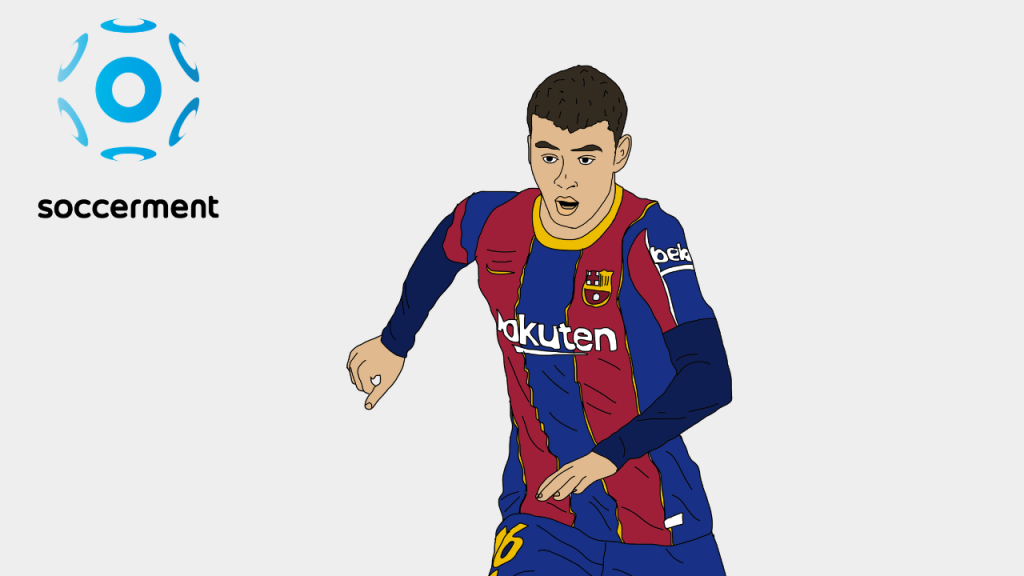
| Pedri has quickly established himself as a regular starter for FC Barcelona, no easy feat for an 18-year-old coming from the Segunda División. He has tended to play as an inverted winger, at least at the start of the season, but the combination of his excellent passing and dribbling skills, combined with outstanding vision, could eventually make him a top mezzala, especially if he improves his defensive work. Barça are reaching the end of a cycle, which will likely continue to bring harsh criticism and chaos. This represents both a threat and an opportunity for Pedri, who will need to remain extremely focused on improving his game if he is to become a top player. ➜ FULL ANALYSIS |
| Profile |
| Seasonal stats |
| Advanced stats & comparative tool |
19th. Adrien Truffert (19 | France | Rennes | xSPR: 47.3)
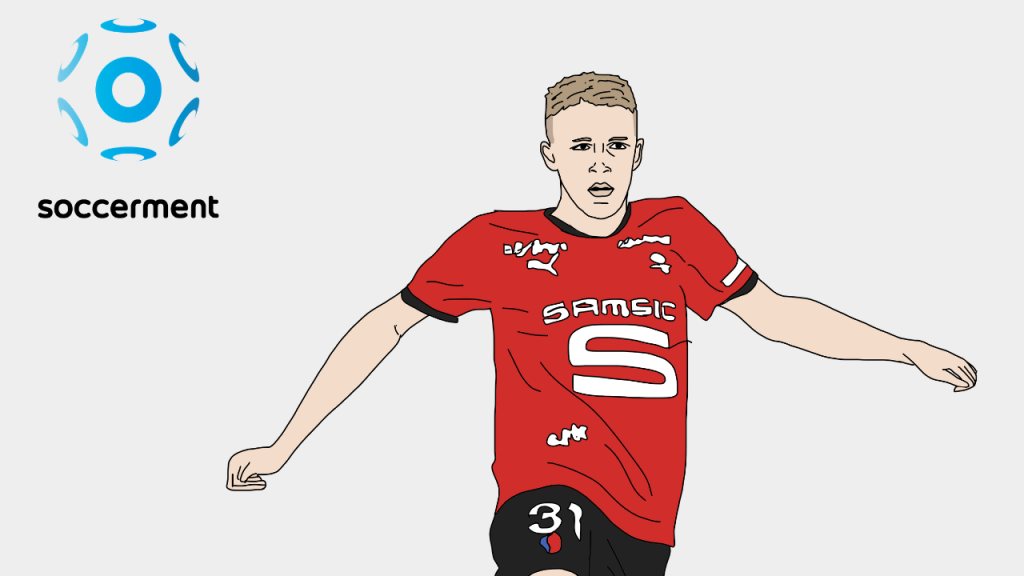
| Adrien Truffert is not as easy to define as one might think at first glance. Capable of playing in basically all positions on the left flank, he is endowed with dribbling and technique but has some defensive frailties. His offensive skills suggest that in the right tactical context he could become an excellent wing-back. He could also become a complete and highly in-demand left-back were he to improve his defensive reliability. ➜ FULL ANALYSIS |
| Profile |
| Seasonal stats |
| Advanced stats & comparative tool |
18th. Jude Bellingham (17 | England | Borussia Dortmund | xSPR: 47.8)
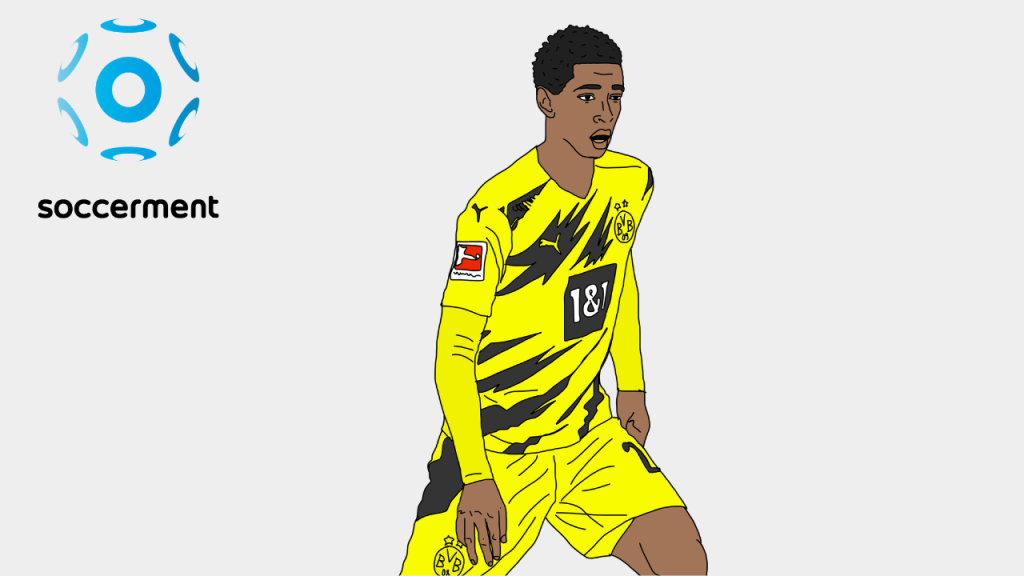
| There is a reason why the 17-year-old Jude Bellingham is already getting regular playing time at Borussia Dortmund and has debuted with the England national team: he is already a complete midfielder. Physically strong, Bellingham is comfortable in both defensive and attacking duels, despite his very young age. In our view, however, he will need to significantly improve his passing and shooting if he is to step up to the next level and develop into a top box-to-box midfielder. ➜ FULL ANALYSIS |
| Profile |
| Seasonal stats |
| Advanced stats & comparative tool |
17th. Mason Greenwood (19 | England | Man Utd | xSPR: 47.8)
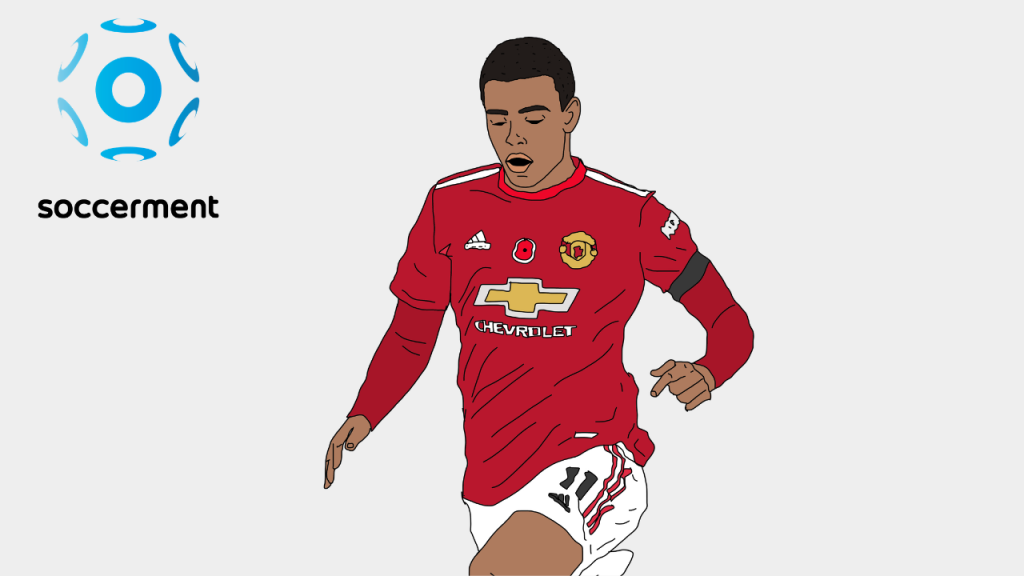
| Mason Greenwood’s impact at Manchester United has been as rapid and unpredictable as he is on the pitch. His impressive 2019/20 campaign set the bar very high for the young Englishman, and he has struggled to meet those expectations so far this season. Nonetheless, he undoubtedly possesses outstanding attributes, above all his speed and two-footedness, which make him a constant threat for opposition defences. In our view, to complete his development and become a regular starter for the Red Devils, he will need to absorb as much as he can, as quickly as he can, from the more experienced forwards now playing for Manchester United. ➜ FULL ANALYSIS |
| Profile |
| Seasonal stats |
| Advanced stats & comparative tool |
16th. Mohamed Ihattaren (18 | Netherlands | PSV | xSPR: 47.9)
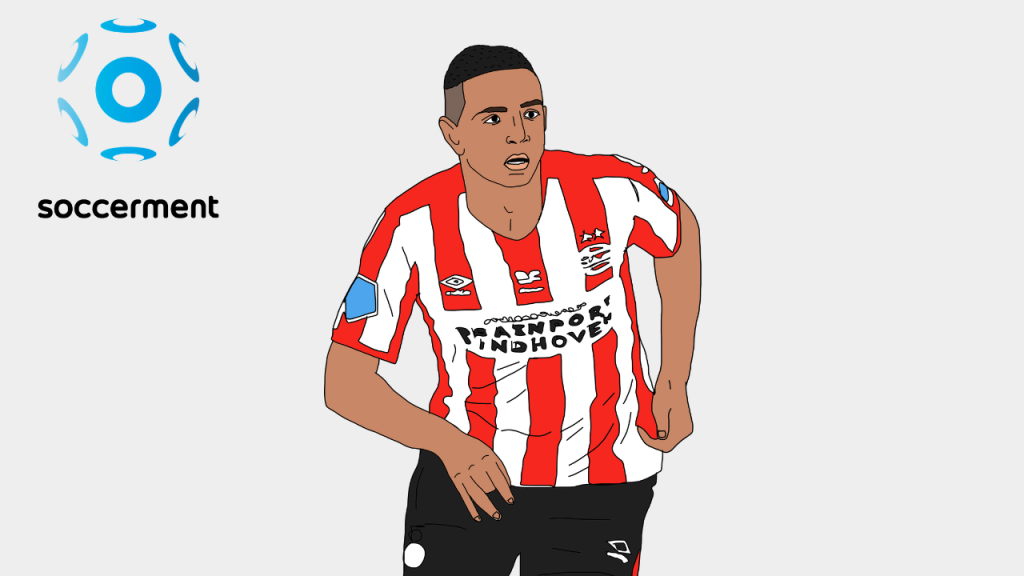
| A left-footed attacking midfielder, Mohamed Ihattaren (18 years old, PSV) is probably one of the most technically gifted U19 players in our database. His dribbling and passing skills, combined with his above-average vision, make him the archetypal number 10. Thanks to last season’s performances he has attracted interest from many clubs in the top 5 leagues. This year, however, he is finding it difficult to meet the higher expectations that he has generated and we feel that only a marked improvement in the second half of the season will see the top European clubs renew their interest. ➜ FULL ANALYSIS |
| Profile |
| Seasonal stats |
| Advanced stats & comparative tool |
[ec_product productid=”12″ style=””]
15th. Rayan Aït-Nouri (19 | France | Wolves | xSPR: 48.4)
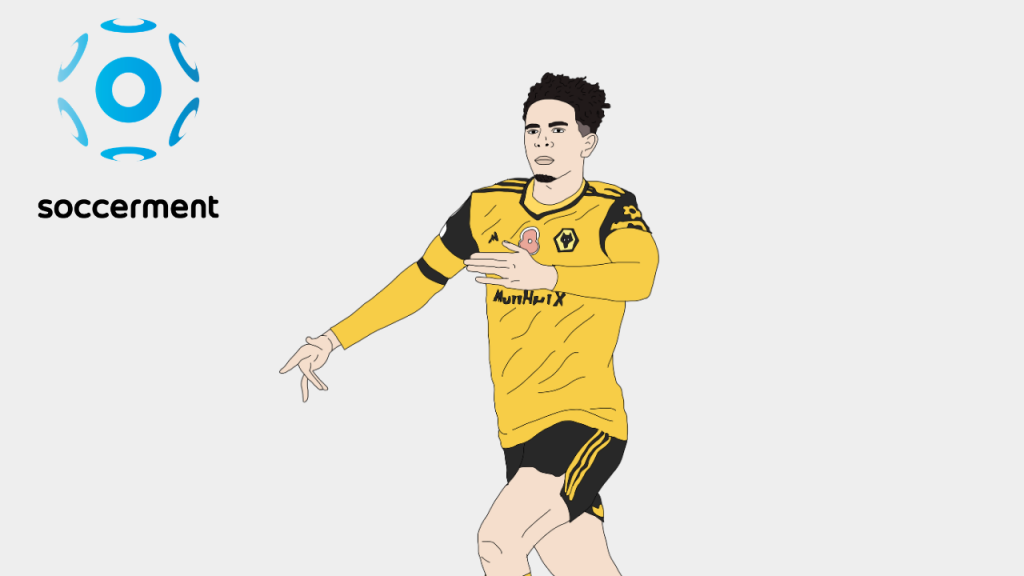
| Rayan Aït-Nouri is one of the most promising left backs in Europe. An impressive start to his career in Ligue 1 sent expectations sky-rocketing, leading to a loan with an option to buy for Wolverhampton Wanderers, orchestrated by the powerful agent Jorge Mendes. Adapting to the Premier League can be tough for a player of his age, and after scoring on debut he struggled in his following games. But his performances have since bounced back and he now seems ready to fight for his place as a starter at Wolves. ➜ FULL ANALYSIS |
| Profile |
| Seasonal stats |
| Advanced stats & comparative tool |
14th. Noni Madueke (18 | England | PSV | xSPR: 49.2)
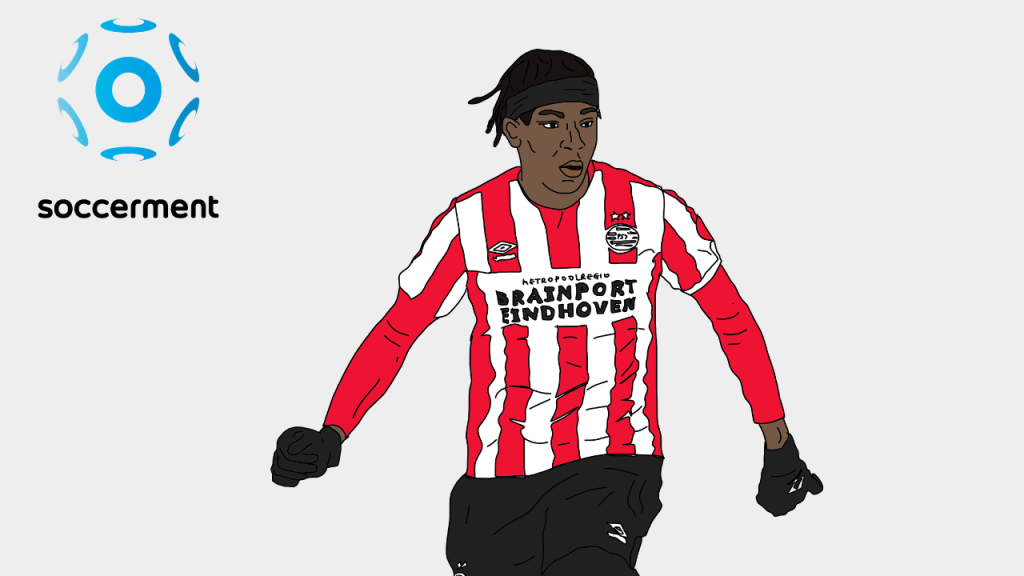
| Inspired by the path taken by his compatriot Jadon Sancho, Noni Madueke left England for a foreign football academy at a young age. His destination was PSV Eindhoven, a decision that seems to be paying off. Left-footed, he plays on the right flank as an inverted inside forward, capitalising on his pace and dribbling skills to finish or create chances. In the Eredivisie this season he has been directly involved in 1.4 goals every 90 minutes to date, the fourth-highest ratio among U-20 players. ➜ FULL ANALYSIS |
| Profile |
| Seasonal stats |
| Advanced stats & comparative tool |
13th. Myron Boadu (20 | Netherlands | AZ | xSPR: 49.2)
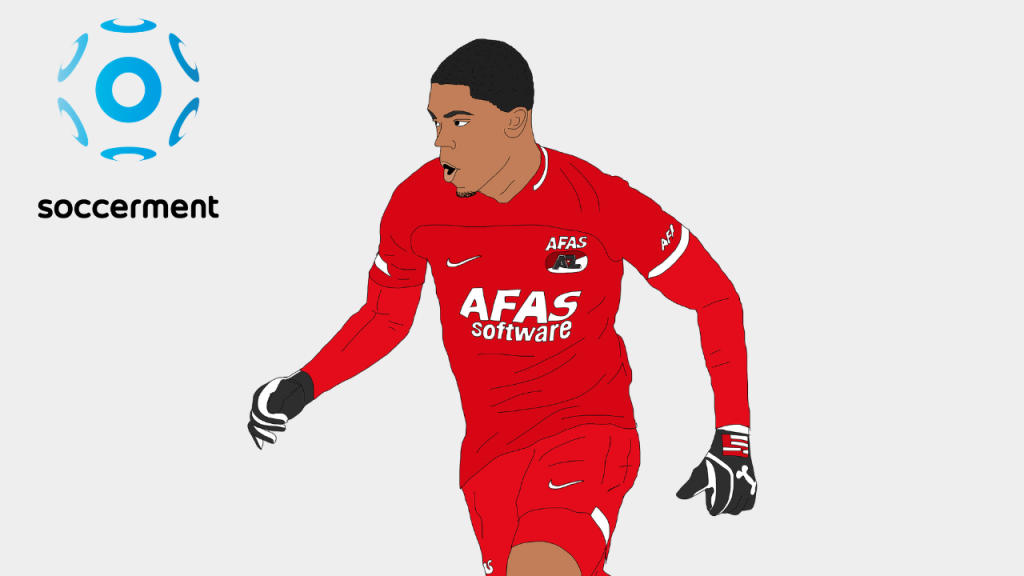
| Myron Boadu, soon to turn 20, is one of the best examples of a modern ‘poacher’, a forward with an extreme focus on scoring goals. A product of AZ Alkmaar’s talent factory, Boadu has demonstrated his special instinct for goals, although he does also seem inclined towards the associative game typical of Dutch football. After last year’s breakthrough season, Boadu’s performance levels have dropped, in line with AZ Alkmaar’s. Nonetheless, we believe that the transfer rumours about him will intensify in the near future. ➜ FULL ANALYSIS |
| Profile |
| Seasonal stats |
| Advanced stats & comparative tool |
12th. Bukayo Saka (19 | England | Arsenal | xSPR: 49.4)
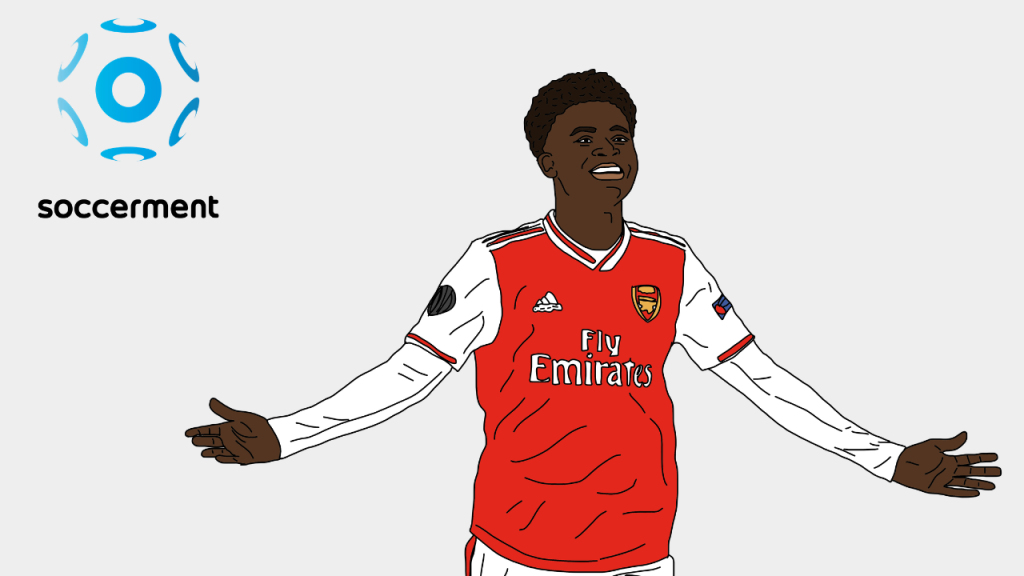
| In the past few months, Bukayo Saka has been one of the few bright spots at a struggling Arsenal side. Saka’s versatility has been on full display as he has lined up in several positions Arsenal’s starting XI, under both Unai Emery and Mikel Arteta. His potential and versatility could allow him to become an elite player in two different roles. However, in our view he would be better off finding a clearly defined role and working on his weaknesses. Focusing on two roles would probably become counterproductive in the long term. ➜ FULL ANALYSIS |
| Profile |
| Seasonal stats |
| Advanced stats & comparative tool |
11th. Giovanni Reyna (18 | USA | Borussia Dortmund | xSPR: 51.1)

| Giovanni Reyna’s unquestionable talent is a key reason why the future looks bright for both the USMNT and Borussia Dortmund. Physically strong (185cm and 79kg) and gifted with great technical ability, he normally plays as attacking midfielder, often seeking space on the left. However, we feel that Reyna is yet to fully find his on-pitch identity, and so we worry that the recent managerial change at BVB represents more of a threat than an opportunity at this stage of his career. We expect him to remain in Dortmund for a few more years. ➜ FULL ANALYSIS |
| Profile |
| Seasonal stats |
| Advanced stats & comparative tool |
10th. Flavius Daniliuc (19 | Austria | Nice | xSPR: 51.2)
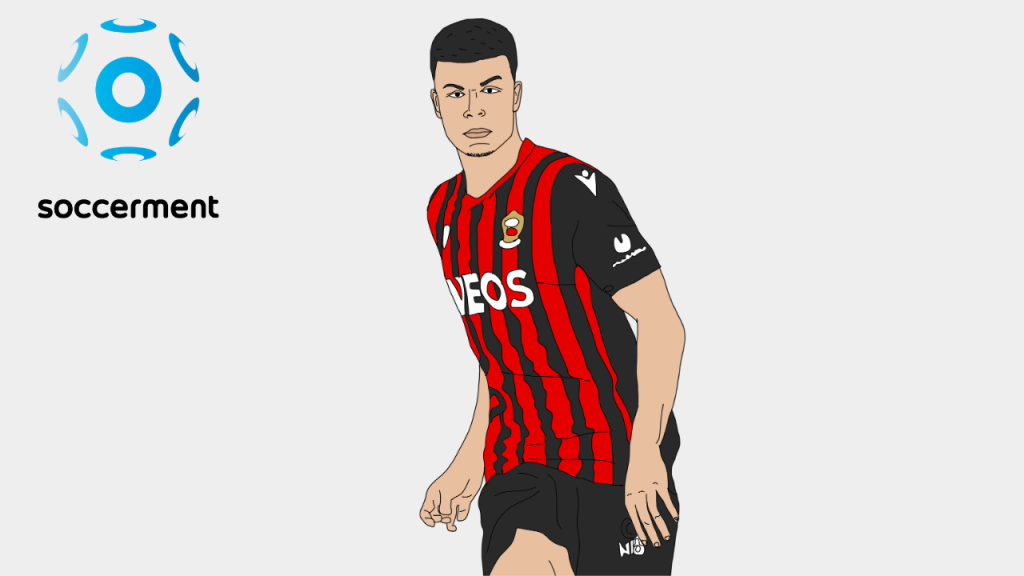
| Flavius Daniliuc has very few appearances under his belt and less than 900 minutes in his senior career, but has nonetheless been able to impress both us and our valuation algorithms. Although it is still unclear just how much potential he has, it is worth keeping an eye on him until the end of the current season. Having played at the academies of Real Madrid and Bayern Munich in his youth, he joined OGC Nice because he wanted senior playing time. The decision seems to be paying off. ➜ FULL ANALYSIS |
| Profile |
| Seasonal stats |
| Advanced stats & comparative tool |
9th. Jeremy Doku (18 | Belgium | Rennes | xSPR: 51.3)
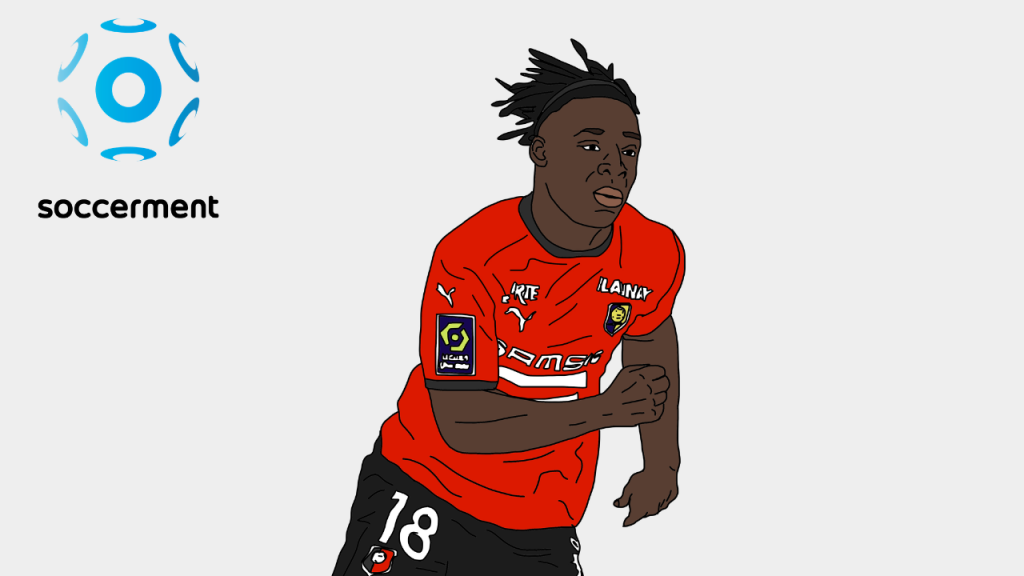
| Jérémy Doku is one of the wonderkids with the most room for improvement, in our view. The 18 year-old winger has already showcased his electrifying pace and elite dribbling for both club and country. However, we find his decision making in the final third to still be suboptimal and, after joining Rennes, he is still adapting to Ligue 1. Should he continue to develop his attacking contribution, we truly believe that Doku has the potential to shine for a top European side in the future. ➜ FULL ANALYSIS |
| Profile |
| Seasonal stats |
| Advanced stats & comparative tool |
8th. Odilon Kossounou (20 | Côte d’Ivoire | Club Brugge | xSPR: 51.5)
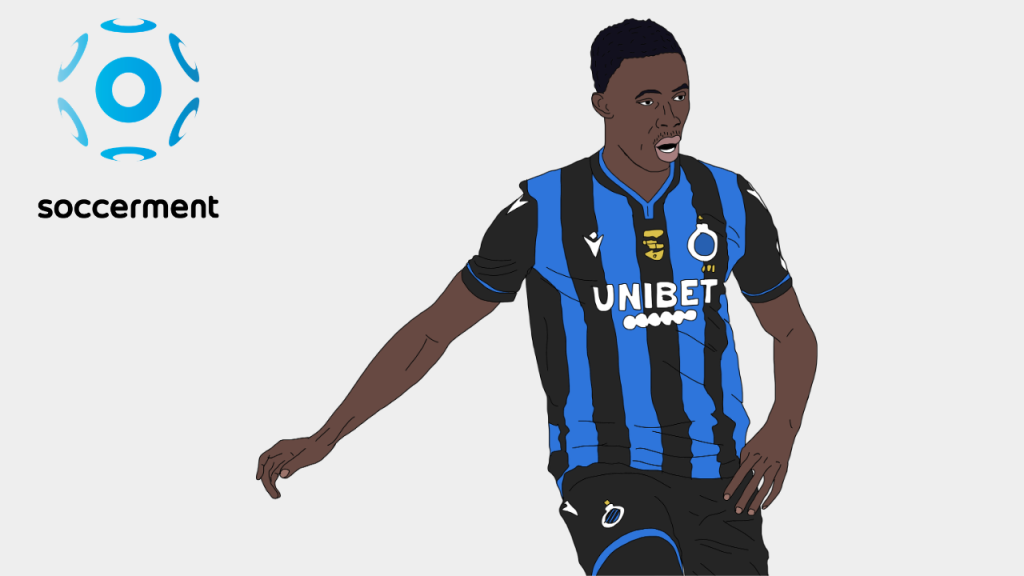
| Odilon Kossounou has been developing at lightning speed since his arrival in Europe two years ago. The 20-year-old centre back excels in his tackling: his long limbs and the excellent timing of his interventions gives him one of the highest tackle success ratios in Europe. Although he has just signed a new contract with Club Brugge until June 2024, we believe that his name will be a regular feature of the transfer rumour mill: there are simply too many top clubs in search of good centre backs. ➜ FULL ANALYSIS |
| Profile |
| Seasonal stats |
| Advanced stats & comparative tool |
7th. Florian Wirtz (17 | Germany | Bayer 04 | xSPR: 51.8)
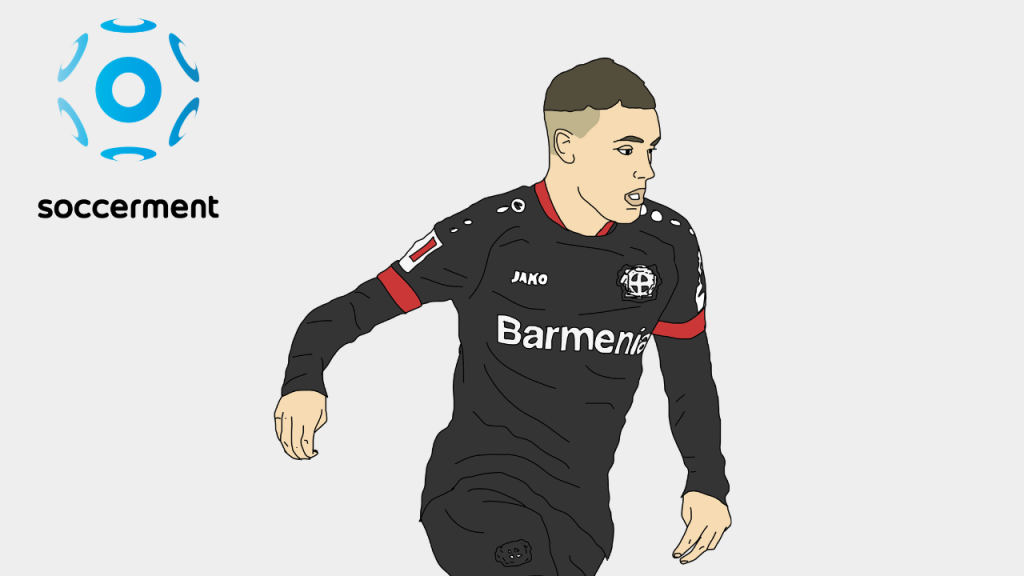
| Florian Wirtz has all the credentials to become one of the top attacking midfielders in Europe, in our view. Technically gifted, Wirtz’s dribbling and vision are his main skills, while he is also very dynamic and covers a lot of ground during matches. Furthermore, various external factors lead us to believe that this 17-year-old wonderkid could fulfil his potential: he shows determination and lives in a positive and familial environment, with a club that is used to nurturing young talent and that strongly believes in his game, giving him space and continuity. ➜ FULL ANALYSIS |
| Profile |
| Seasonal stats |
| Advanced stats & comparative tool |
6th. Eduardo Camavinga (18 | France | Rennes | xSPR: 52.6)
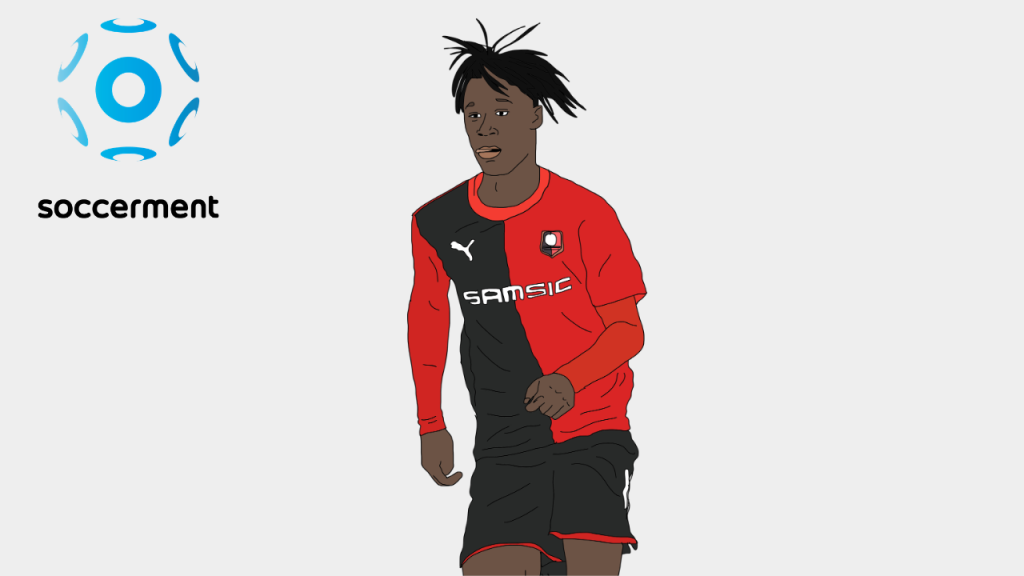
| Already on the shortlists of many of Europe’s top clubs, Eduardo Camavinga showcases uncommon maturity, confidence and composure, all qualities that he will surely develop further thanks to his strong attention to detail and work ethic. The next step in Camavinga’s on-pitch development is to complete the transition from defensive to box-to-box midfielder, which should also translate into more assists and goals. Off the pitch, Camavinga will soon have to move to a top club, something that the player and his entourage will have to manage carefully. ➜ FULL ANALYSIS |
| Profile |
| Seasonal stats |
| Advanced stats & comparative tool |
5th. Curtis Jones (19 | England | Liverpool | xSPR: 53.6)
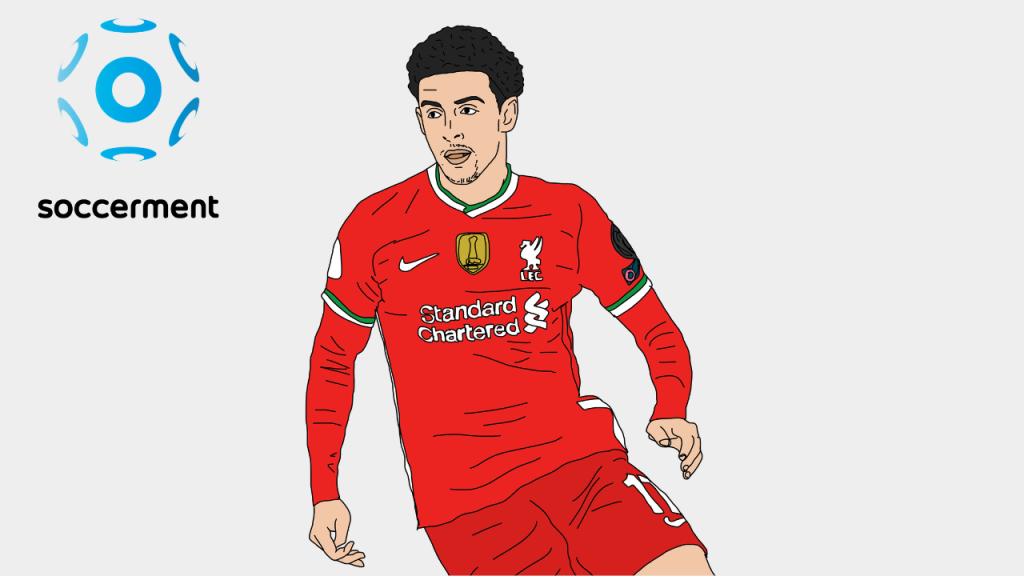
| Although he has only recently started playing regularly, it is clear what type of player Curtis Jones is. He exploded into Liverpool’s first team when it was hit by an injury crisis. He has impressed with his composure and passing skills, ensuring that the absence of certain elite players has not been felt. His real challenge in the near future is going to be establishing himself in the team when Jurgen Klopp has more options in midfield. ➜ FULL ANALYSIS |
| Profile |
| Seasonal stats |
| Advanced stats & comparative tool |
4th. Lassina Traoré (20 | Burkina Faso | Ajax | xSPR: 53.7)
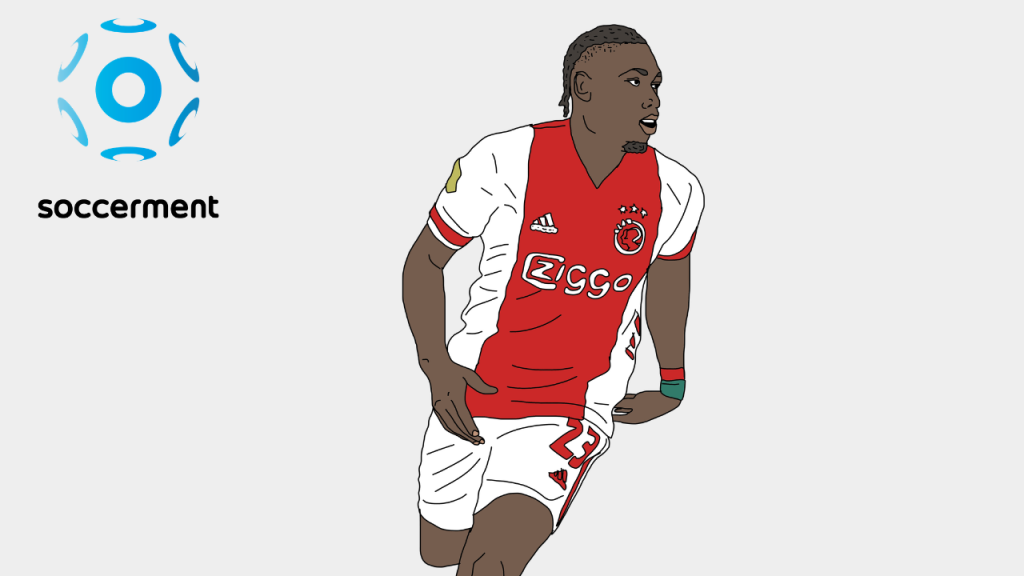
| Lassina Traoré is a 19-year-old striker from Burkina Faso who plays for AFC Ajax. While his imposing physique might lead some to consider him a target men, and his finishing ability is more typical of a poacher, we consider him a complete forward, able to consistently score goals and create chances for his teammates. This selfless attitude is ideal for a striker at Ajax, where we are expecting him to remain for a few years as he completes his development. ➜ FULL ANALYSIS |
| Profile |
| Seasonal stats |
| Advanced stats & comparative tool |
3rd. Ryan Gravenberch (18 | Netherlands | Ajax | xSPR: 57.7)
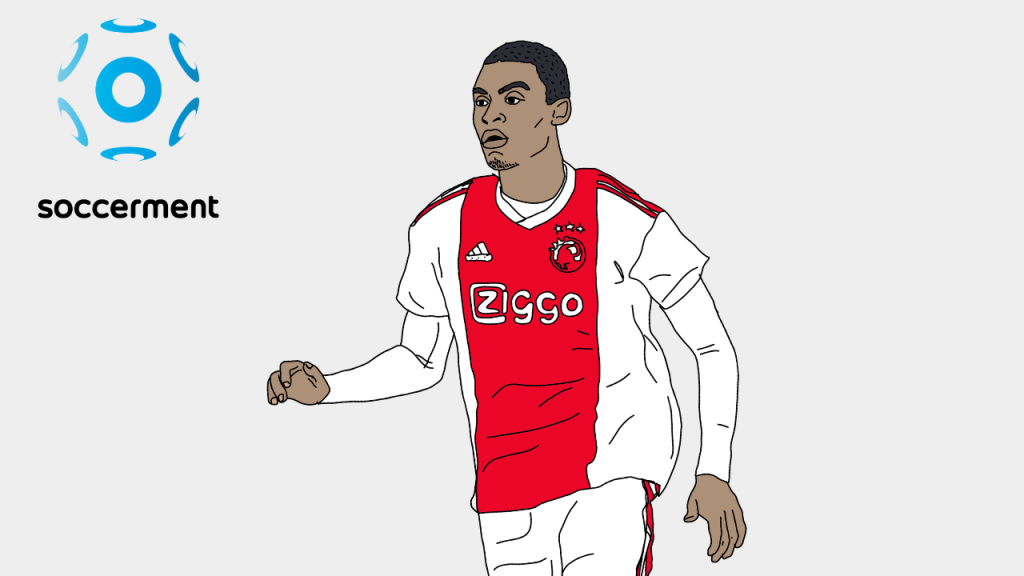
| Technically gifted and physically strong, Ryan Gravenberch is reaping the benefits of developing in the perfect environment, AFC Ajax, and being the client of one of the most powerful agents in the game, Mino Raiola. Thanks to this perfect recipe, here at Soccerment we believe that the Dutch midfielder, now 18, could reach “elite player” status before his 23rd birthday. However, we do think that Gravenberch will have to leave his comfort zone sooner rather than later, something that could prove instrumental in building his character. ➜ FULL ANALYSIS |
| Profile |
| Seasonal stats |
| Advanced stats & comparative tool |
2nd. Benoit Badiashile (19 | France | Monaco | xSPR: 58.0)
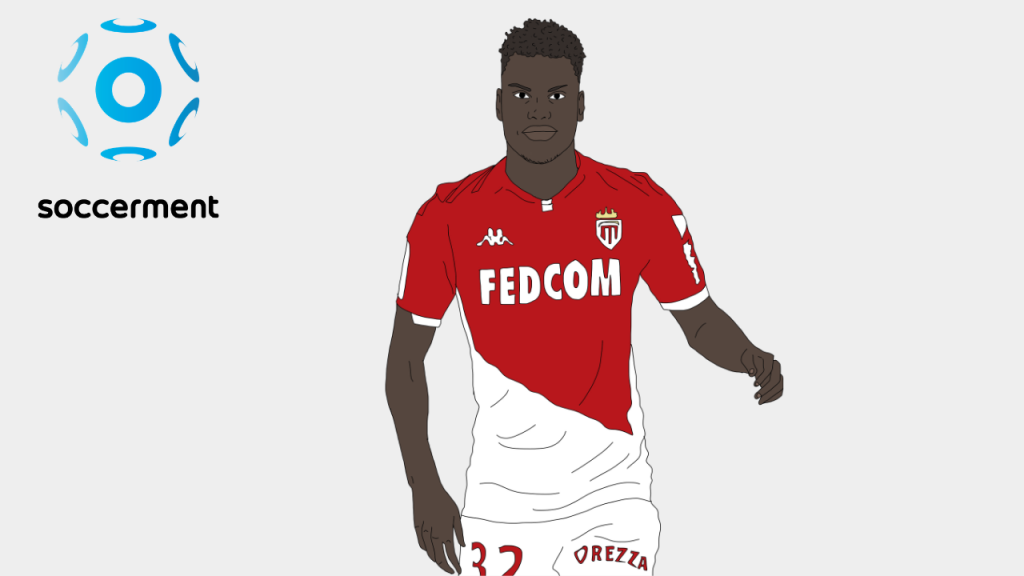
| Benoit Badiashile is 19 years old, but can already boast more than 50 appearances in one of the top 5 leagues in Europe. Tall, left-footed and with very good passing skills, it is little wonder that he is one of the most sought-after centre-backs in Europe. An improvement in his defending, plus a few kilograms more of muscle, would put him in prime position to establish himself in a top European club, in our view. ➜ FULL ANALYSIS |
| Profile |
| Seasonal stats |
| Advanced stats & comparative tool |
1st. Ansu Fati (18 | Spain | FC Barcelona | xSPR: 58.5)
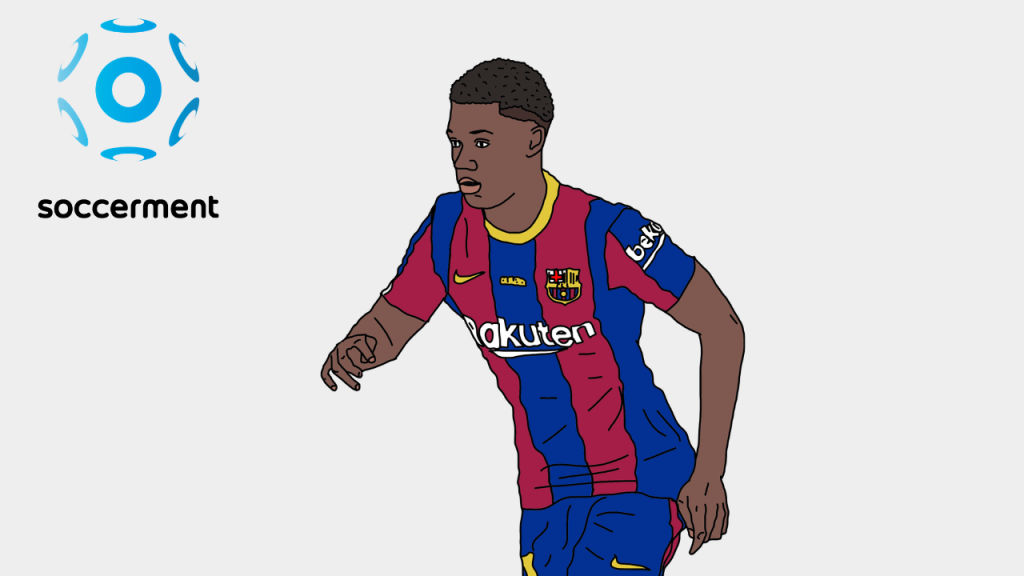
| Of the wonderkids born in 2001 or later, Ansu Fati is the most likely to reach “world-class player” status, according to our analysis. In the final third he participates effectively in the creation of attacks, but it is the astonishing precision of his finishing that really sets him apart. This is thanks to his deep understanding of the game, which allows him to take rapid and efficient decisions. There is still room for improvement in some areas (e.g. dribbling) and uncertainty regarding his predisposition to injuries, but it is clear to us that we are looking at a potential Ballon d’Or. We would expect him to receive increasing playing responsibilities at FC Barcelona in the future. ➜ FULL ANALYSIS |
| Profile |
| Seasonal stats |
| Advanced stats & comparative tool |
Summary table
| Rank | Player | Age | Nat. | Role | Club | SPR | xSPR |
|---|---|---|---|---|---|---|---|
| 1 | A. Fati | 18 | 🇪🇸 | FW | FCB | 49 | 58.5 |
| 2 | B. Badiashile | 19 | 🇫🇷 | CB | AMO | 53 | 58.0 |
| 3 | R. Gravenberch | 18 | 🇳🇱 | CM | AJX | 47 | 57.7 |
| 4 | L. Traoré | 20 | 🇧🇫 | FW | AJX | 47 | 53.7 |
| 5 | C. Jones | 19 | 🏴 | CM | LIV | 49 | 53.6 |
| 6 | E. Camavinga | 18 | 🇫🇷 | CM | REN | 45 | 52.6 |
| 7 | F. Wirtz | 17 | 🇩🇪 | CAM | B04 | 44 | 51.8 |
| 8 | O. Kossounou | 20 | 🇨🇮 | CB | BRU | 45 | 51.5 |
| 9 | J. Doku | 18 | 🇧🇪 | WAM | REN | 42 | 51.3 |
| 10 | F. Daniliuc | 19 | 🇦🇹 | CB | NIC | 48 | 51.2 |
| 11 | G. Reyna | 18 | 🇺🇸 | CM | BVB | 42 | 51.1 |
| 12 | B. Saka | 19 | 🏴 | WAM | ARS | 42 | 49.4 |
| 13 | M. Boadu | 20 | 🇳🇱 | FW | AZA | 49 | 49.2 |
| 14 | N. Madueke | 18 | 🏴 | FW | PSV | 44 | 49.2 |
| 15 | R. Aït-Nouri | 19 | 🇫🇷 | FB | WOL | 47 | 48.4 |
| 16 | M. Ihattaren | 18 | 🇳🇱 | CAM | PSV | 45 | 47.9 |
| 17 | M. Greenwood | 19 | 🏴 | FW | MUN | 46 | 47.8 |
| 18 | J. Bellingham | 17 | 🏴 | CM | BVB | 36 | 47.8 |
| 19 | A. Truffert | 19 | 🇫🇷 | FB | REN | 44 | 47.3 |
| 20 | Pedri | 18 | 🇪🇸 | CM | FCB | 38 | 46.8 |
| 21 | N. Collins | 19 | 🇮🇪 | CB | STK | 40 | 46.3 |
| 22 | Rodrygo | 20 | 🇧🇷 | WAM | RMA | 43 | 46.3 |
| 23 | N. Mendes | 18 | 🇵🇹 | FB | SCP | 41 | 46.2 |
| 24 | H. Elliott | 17 | 🏴 | WAM | BLK | 41 | 46.0 |
| 25 | A. Aouchiche | 18 | 🇫🇷 | CAM | ASSE | 41 | 45.8 |
| 26 | B. Gil | 19 | 🇪🇸 | WAM | EIB | 40 | 45.7 |
| 27 | N. Raskin | 19 | 🇧🇪 | CM | STA | 41 | 45.4 |
| 28 | A. Hickey | 18 | 🏴 | FB | BOL | 42 | 45 |
| 29 | N. Rovella | 19 | 🇮🇹 | CM | GEN | 39 | 43.7 |
| 30 | M. Thiaw | 19 | 🇫🇮 | CB | S04 | 41 | 43.2 |
| 31 | I. Ilic | 19 | 🇷🇸 | CM | VER | 39 | 43.1 |
| 32 | A. Broja | 19 | 🇦🇱 | FW | VIT | 40 | 43.1 |
| 33 | K. Sardella | 18 | 🇧🇪 | CB | AND | 44 | 42.8 |
| 34 | E. Destanoglu | 20 | 🇹🇷 | GK | BES | 42 | 42.8 |
| 35 | T. Coulibaly | 19 | 🇫🇷 | WAM | VFB | 39 | 42.6 |
| 36 | C. de Ketelaere | 19 | 🇧🇪 | FW | BRU | 35 | 42.4 |
| 37 | T. Kubo | 19 | 🇯🇵 | WAM | GET | 44 | 42.4 |
| 38 | C. Devenish | 19 | 🇨🇴 | CB | BOA | 40 | 41.9 |
| 39 | E. Bilal Touré | 19 | 🇲🇱 | FW | REI | 40 | 41.6 |
| 40 | Y. Verschaeren | 19 | 🇧🇪 | CM | AND | 38 | 41.2 |
| 41 | B. Diakite | 20 | 🇫🇷 | CB | TOU | 44 | 41.1 |
| 42 | I. Kabore | 19 | 🇧🇫 | FB | MEC | 40 | 41.0 |
| 43 | L. Kang-In | 19 | 🇰🇷 | WAM | VAL | 37 | 40.8 |
| 44 | N. Katterbach | 19 | 🇩🇪 | FB | KOL | 42 | 38.8 |
| 45 | Y. Badij | 19 | 🇸🇳 | FW | BRU | 36 | 38.7 |
| 46 | Y. Musah | 18 | 🇺🇸 | WAM | VAL | 35 | 38.7 |
| 47 | A. Vranckx | 18 | 🇧🇪 | CM | MEC | 34 | 38.7 |
| 48 | J. Chotard | 19 | 🇫🇷 | DMC | MPL | 40 | 38.6 |
| 49 | A. Barrenetxea | 19 | 🇪🇸 | FW | RSO | 37 | 38.4 |
| 50 | A. Papetti | 18 | 🇮🇹 | CB | BRE | 39 | 37.7 |
Top 11: using a 3-4-1-2 formation
The Top 11 lineup was built by selecting the mix of tactical formation and players maximising the Expected SPR in 12 months. We ended up with a 3-4-1-2 formation, which displays an average xSPR of 52.6, while the second-best and third-best format (4-3-3 and 4-2-3-1) had an average xSPR of 52.3 and 52.1, respectively.
The final lineup, represented by nine clubs and ten nationalities, foresees the following players:
- Goalkeeper: Ersin Destanoglu (🇹🇷 | Besiktas)
- Centre-back (right): Flavius Daniliuc (🇦🇹 | OGC Nice)
- Left wing-back: Bukayo Saka (🏴 | Arsenal)
- Centre-back (centre): Odilon Kossounou (🇨🇮 | Club Brugge)
- Centre-back (left): Benoît Badiashile (🇫🇷 | AS Monaco)
- Central midfielder (right): Eduardo Camavinga (🇫🇷 |Rennes)
- Right winger: Jérémy Doku (🇧🇪 | Rennes)
- Central midfielder (left): Ryan Gravenberch (🇳🇱 | Ajax)
- Striker: Lassina Traoré (🇧🇫 | Ajax)
- Trequartista: Florian Wirtz (🇩🇪 | Bayer Leverkusen)
- Second-striker: Ansu Fati (🇪🇸 | FC Barcelona)
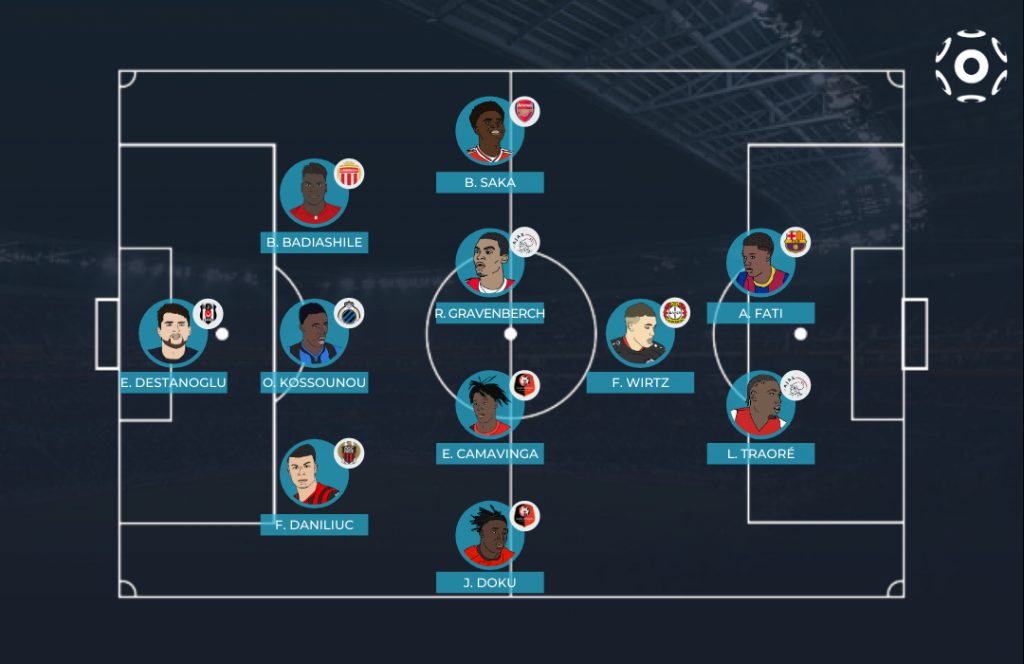
Conclusions
Ansu Fati “wins” our data-driven beauty contest by coming first for the Expected Soccerment Performance Rating in twelve months.
Behind Fati there are many other exciting players, in all possible roles. We can’t wait to see their development. And we’re also very excited to be able to analyse the stats of the new wonderkids, ones who may yet to have debuted in senior football and are now busy scoring goal after goal in the U-19 divisions. We really do agree with Baldi: nothing captures the imagination of the football fan in quite the same way as the emergence of a prodigious young player!
If you’s like to to sign up for free to our analytics tools, click the button here below.
For any comment, request or query, please write us to research@soccerment.com.
If you would like to stay on top of the newsflow regarding the performances of all the Under-20 players of the Premier League, Championship, La Liga, Segunda Division, Serie A, Serie B, Bundesliga, 2.Bundesliga, Ligue 1, Ligue 2, Primeira Liga, Eredivisie, Jupiler Pro League and Süper Big, follow us on Twitter: @Soccerment_Blog: our automated system offers live news on league performances.
